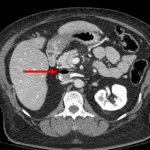By now, everyone probably knows that texting while driving is bad. So legally banning texting is good, right? It seems that way, since everyone is doing it. Thirty states plus the District of Columbia currently ban texting while driving, and a third of those laws were passed just this year.
Talk about the law of unintended consequences. The Highway Loss Data Institute compared collision insurance claims before and after bans were put into effect in four states (CA, LA, MN, WA). Crash rates actually rose in three of the four states after the bans were passed.
How can this be? Unfortunately, the claim data can’t tell us what the increase is due to. They speculate that texting drivers are trying harder to conceal their habit, keeping their phones out of sight and taking their eyes off the road even more. Or, it could just be a statistical fluke.
The federal Transportation Secretary disagrees. He stated that distracted driving fatalities increased from 2005 to 2008, but stopped rising in 2009. I’m not clear on where this data comes from.
In either case, texting remains a bad thing to do. This debate just points out that bans are not the complete answer. Prevention programs and behavior modification need to be developed to comprehensively address this problem.



